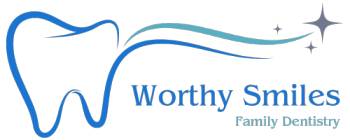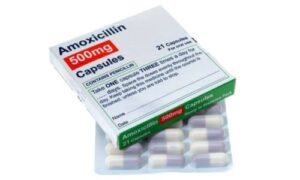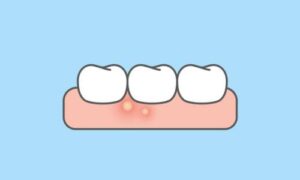When you have a tooth extracted, taking care of the empty socket is crucial for a smooth recovery. A healthy tooth socket after extraction heals well, avoids infection, and allows you to return to normal life quickly. This guide will help you understand how to ensure your tooth socket stays healthy after an extraction.
Understanding Tooth Extraction
Tooth extraction is a common dental procedure. It involves removing a tooth from its socket in the bone. This might be necessary due to decay, gum disease, trauma, or overcrowding. After the tooth is removed, the focus shifts to the socket, the hole left in the bone.
The Importance of a Healthy Tooth Socket After Extraction
A healthy tooth socket after extraction is essential for several reasons:
- Prevents Infection: A clean, healthy socket reduces the risk of infection.
- Speeds Healing: Proper care helps the socket heal faster.
- Reduces Pain: Good care can minimize discomfort and swelling.
- Prepares for Future Dental Work: If you plan to get an implant or bridge, a healthy socket is crucial.
Immediate Post-Extraction Care
The first 24 hours after tooth extraction are critical. Here are steps to take for a healthy tooth socket after extraction:
Bite on Gauze
Your dentist will place gauze over the extraction site. Bite down firmly to help stop the bleeding. Keep it in place for 30-45 minutes.
Avoid Disturbing the Socket
Do not touch or poke the socket with your tongue or fingers. Avoid vigorous rinsing or spitting, as this can dislodge the blood clot.
Apply Ice
Use an ice pack on your cheek near the extraction site. Apply it for 15 minutes on and 15 minutes off to reduce swelling.
Take Prescribed Medication
Follow your dentist’s instructions regarding painkillers and antibiotics. This helps manage pain and prevent infection.
Keeping the Tooth Socket Healthy
To ensure a healthy tooth socket after extraction, follow these tips over the next few days:
Maintain Oral Hygiene
- Rinse Gently: After 24 hours, rinse your mouth gently with warm salt water. This helps clean the socket without dislodging the blood clot.
- Brush Carefully: Brush your teeth as usual, but avoid the extraction site. Be gentle around the socket area.
74% of all Adults have had a Tooth Extracted. 84% of Adults have at least one or more fillings.
Eat Soft Foods
Stick to a diet of soft foods like yogurt, mashed potatoes, and soup. Avoid hard, crunchy, or chewy foods that can irritate the socket.
Avoid Straws and Smoking
Sucking through a straw or smoking can dislodge the blood clot. This can lead to a painful condition called a dry socket.
Stay Hydrated
Drink plenty of water to stay hydrated. Avoid alcohol and caffeinated beverages, as they can dehydrate you and hinder healing.
Signs of a Healthy Tooth Socket After Extraction
Monitoring the extraction site to ensure it is healing properly is important. Here are signs of a healthy tooth socket after extraction:
Reduced Swelling
Swelling should peak within the first 48 hours and then start to reduce.
Formation of a Blood Clot
A blood clot should form in the socket and remain there. This is crucial for healing.
Decreasing Pain
Some discomfort is normal but should gradually decrease over a few days.
No Excessive Bleeding
Bleeding should stop within a few hours of extraction. Minor oozing is normal, but it should not be excessive.
No Signs of Infection
There should be no pus, severe swelling, or fever. These are signs of infection and require immediate attention.
When to Seek Help
Sometimes, despite your best efforts, complications can arise. Seek dental care if you notice any of the following:
Severe Pain
If you experience severe or worsening pain after the first few days, it could be a sign of dry socket or infection.
Persistent Bleeding
If bleeding continues beyond 24 hours or is heavy, contact your dentist.
Signs of Infection
Look for signs like increased swelling, pus, fever, or a bad taste in your mouth.
Numbness
Inform your dentist if you experience prolonged numbness in your lips, tongue, or chin.
Long-term Care for a Healthy Tooth Socket After Extraction
Even after the initial healing phase, it’s important to continue caring for your mouth to maintain a healthy tooth socket after extraction.
Regular Dental Checkups
Keep regular appointments with your dentist. They can monitor the healing process and address any issues.
Good Oral Hygiene
Maintain a routine of brushing twice daily and flossing. This keeps your mouth healthy and prevents future dental problems.
Healthy Diet
Continue eating a balanced diet rich in vitamins and minerals. Good nutrition supports overall health and healing.
Avoid Smoking
Smoking can impede healing and increase the risk of complications. If you smoke, consider quitting for better oral and overall health.
Tips for Special Cases
Sometimes, tooth extraction involves additional complexities. Here are some special considerations:
Wisdom Tooth Extraction
Wisdom tooth extraction often involves a longer and more complex recovery. Follow your dentist’s instructions closely and be extra cautious with your oral care routine.
Multiple Extractions
If you’ve had multiple teeth removed, your care routine will be similar but more intensive. Ensure you get plenty of rest and follow your dentist’s advice for managing pain and preventing infection.
The Role of Your Dentist
Your dentist is crucial in ensuring a healthy tooth socket after extraction. They will provide you with specific instructions tailored to your situation. Don’t hesitate to ask questions and seek advice if unsure about any part of the recovery process.
FAQs about Healthy Tooth Socket After Extraction
How long does it take for a tooth socket to heal?
The initial healing phase takes about 1-2 weeks. Complete healing can take several months, especially if you plan to get a dental implant.
Can I brush my teeth after an extraction?
Yes, but avoid the extraction site. Be gentle and use a soft-bristled toothbrush.
What should I do if my tooth socket gets infected?
Contact your dentist immediately. They may prescribe antibiotics or other treatments to address the infection.
How can I prevent dry sockets?
Avoid smoking, using straws, and any activity that involves sucking. Follow your dentist’s care instructions closely.
When can I return to normal activities?
Most people can return to normal activities within a few days. Avoid strenuous activities for at least a week to prevent complications.
In the end:
Ensuring a healthy tooth socket after extraction is crucial for your recovery and future dental health. By following the guidelines outlined in this article, you can promote healing, avoid complications, and get back to your daily routine with minimal discomfort. Remember, your dentist is your best resource for advice and care specific to your situation. Prioritize your oral health, and you’ll enjoy a smooth and speedy recovery.














